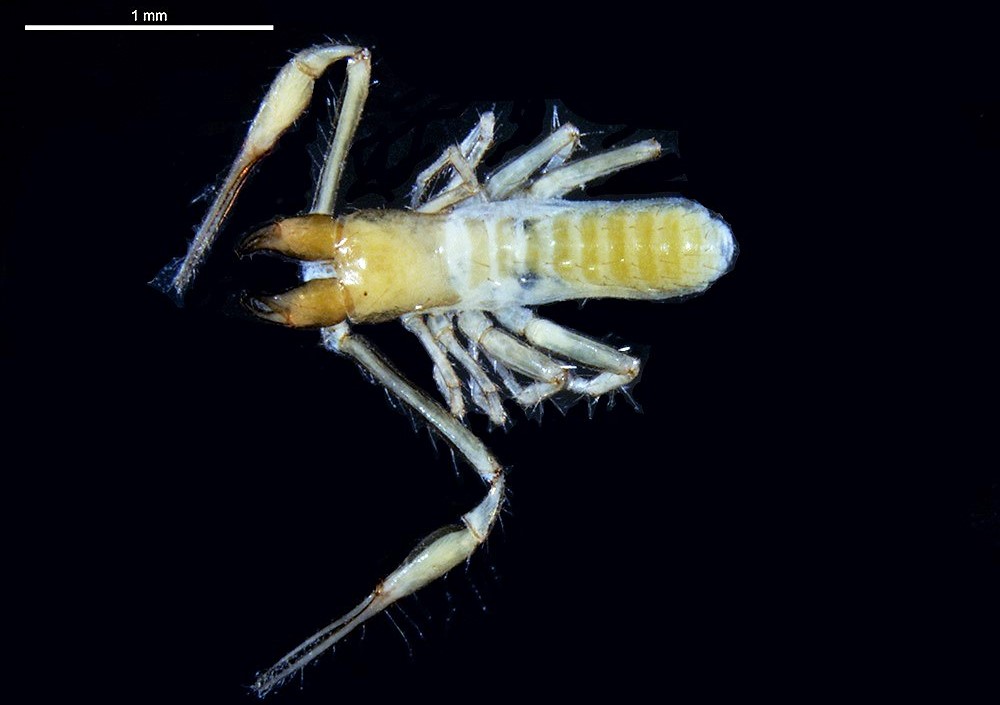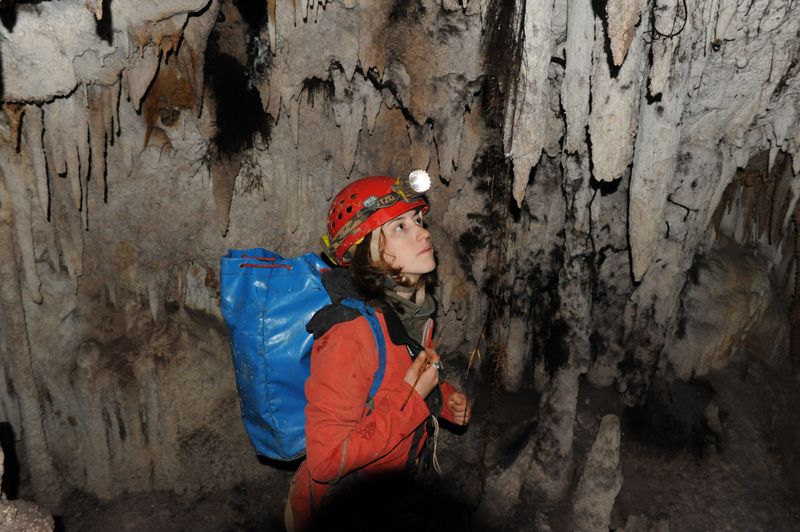 Two new species of pseudoscorpions were discovered in caves in the Algarve. O Occidenchthonius goncalvesi and the Occidenchthonius algharbicus, discovered by biologist Ana Sofia Reboleira, are part of a set of 5 new species of pseudoscorpions found in Portugal by the speleologist and researcher at the Center for Environmental and Sea Studies at the University of Aveiro.
Two new species of pseudoscorpions were discovered in caves in the Algarve. O Occidenchthonius goncalvesi and the Occidenchthonius algharbicus, discovered by biologist Ana Sofia Reboleira, are part of a set of 5 new species of pseudoscorpions found in Portugal by the speleologist and researcher at the Center for Environmental and Sea Studies at the University of Aveiro.
The results of these discoveries were revealed to the world in the April issue of the Journal of Arachnology, in collaboration with researcher Juan Zaragoza of the University of Alicante.

The new pseudoscorpions, an order that belongs to the arachnid class and “are popularly known as false scorpions because, despite not having the stinger and a long abdomen, they are similar to scorpions”, explains the University of Aveiro.
A Occidenchthonius goncalvesi, discovered in caves in the Algarve limestone massif, «is a troglobite organism, which means that it is adapted to life in caves, it is depigmented and lacks ocular structures, as it lives in an environment where darkness is total», describes Ana Sofia Reboleira.
This is, according to the biologist, «also an endemic species, which has a very small geographic distribution and only lives in caves in the limestone massif of the Algarve».
The name of this new pseudoscorpion was dedicated to Professor Fernando Gonçalves, professor at the Department of Biology at the University of Aveiro, who supervised Ana Sofia Reboleira during her Masters in Ecology, Biodiversity and Ecosystem Management and a PhD in Biology.
«It is a recognition of an extraordinary professor whose support was essential to have embarked on the study of Underground Biology and to have pursued an academic career», recalls Ana Sofia Reboleira, who is currently an associate professor at the University of Copenhagen, coordinates a laboratory dedicated to the study of Biology Underground at the Natural History Museum of Denmark.
About the other four species discovered by the researcher, which includes the Occidenchthonius algharbicus (found in a cave in Cerro da Cabeça, in Moncarapacho), they are about 2 millimeters long and “they all belong to the same genus, so they are very similar. The differentiation between these four species is found at the level of the distribution pattern of silks, which are the sensitive structures of the organism and the reproductive structures, as well as the relative proportions of the different body parts and the presence of specialized structures», explains Ana Sofia Reboleira.
In addition to the two “Algarvian” species, the biologist discovered the Occidenchthonius alandroalensis (in a cave in Alandroal, Alentejo), the Occidenchthonius duecensis (in the Dueça speleological system, in Penela) and the Occidenchthonius vachoni (in the Sicó limestone massif, in Leiria).
Over the last ten years, Ana Sofia Reboleira has already discovered 49 new species.


















Comments